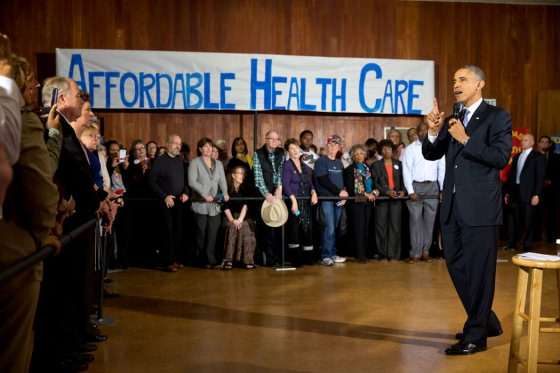Here's How Hard It Is To Sell Obamacare

Since the rollout of Obamacare's health insurance exchanges last October, administration officials have stressed that problems should be judged in a broader context, because open enrollment is a six-month process.
But that six month process is rapidly drawing to a close. Open enrollment ends on March 31, and the administration still has a long way to go before meeting its demographic and sign-up targets.
The White House and allied health groups like Enroll America and Planned Parenthood have ramped up efforts to boost enrollment, using the same sort of individualized targeting that Obama utilized so effectively in his presidential campaigns. Some of it is advertising, but there's also a lot of in-person pitching involved. And that turns out to be rather difficult. The New York Times reports on the struggling efforts to boost enrollment:
The hunt for the uninsured in Broward County got underway one recent afternoon when 41 canvassers, armed with electronic maps on Samsung tablets, set off through working-class neighborhoods to peddle the Affordable Care Act door to door. Four hours later, they had made contact with 2,623 residents and signed up exactly 25 people.
Many of their targets, people identified on sophisticated computer lists generated in Washington as unlikely to have health insurance, had moved away. Some were not home. Many said they already had insurance through Medicare, their parents or a job. A few were hostile at the mere mention of President Obama's health care law.
There are an awful lot of strike-outs. And potential successes sometimes end up stymied by ongoing problems with the website:
By the end of her shift, Ms. Morwin had knocked on 115 doors and talked to 16 people about enrolling. Not one of them signed up.
In some cases, problems with the health care website are still frustrating the canvassers' best efforts.
Ryanbo Morales, 27, a Planned Parenthood worker and a former campaign volunteer for Mr. Obama, searched for the uninsured one recent day with the same zeal he brought to looking for voters during the president's 2012 re-election campaign. But when he finally found Chrystal Rhodes, 24, who said she did not work enough hours at JetBlue to qualify for its health insurance, his efforts to help her sign up on his Samsung tablet were stymied when she kept getting an enrollment error.
"This is really unfortunate," Mr. Morales said.
The Obama administration put quite a bit of effort into applying election-style data-sorting to the Obamacare enrollment effort, and prior to the rollout, they were selling the effort as the president's final campaign. But reports like these suggest that the push is not working nearly as well had been hoped. There are a couple things to be learned from this. One is that marketing and outreach tactics that work well in one arena—say, national elections—don't always translate to other activities, like convincing people to purchase health coverage. The other is that while good demographic data and analytics can be helpful in making a sales pitch, they're of limited use if people aren't actually interested in buying the product.


Show Comments (181)